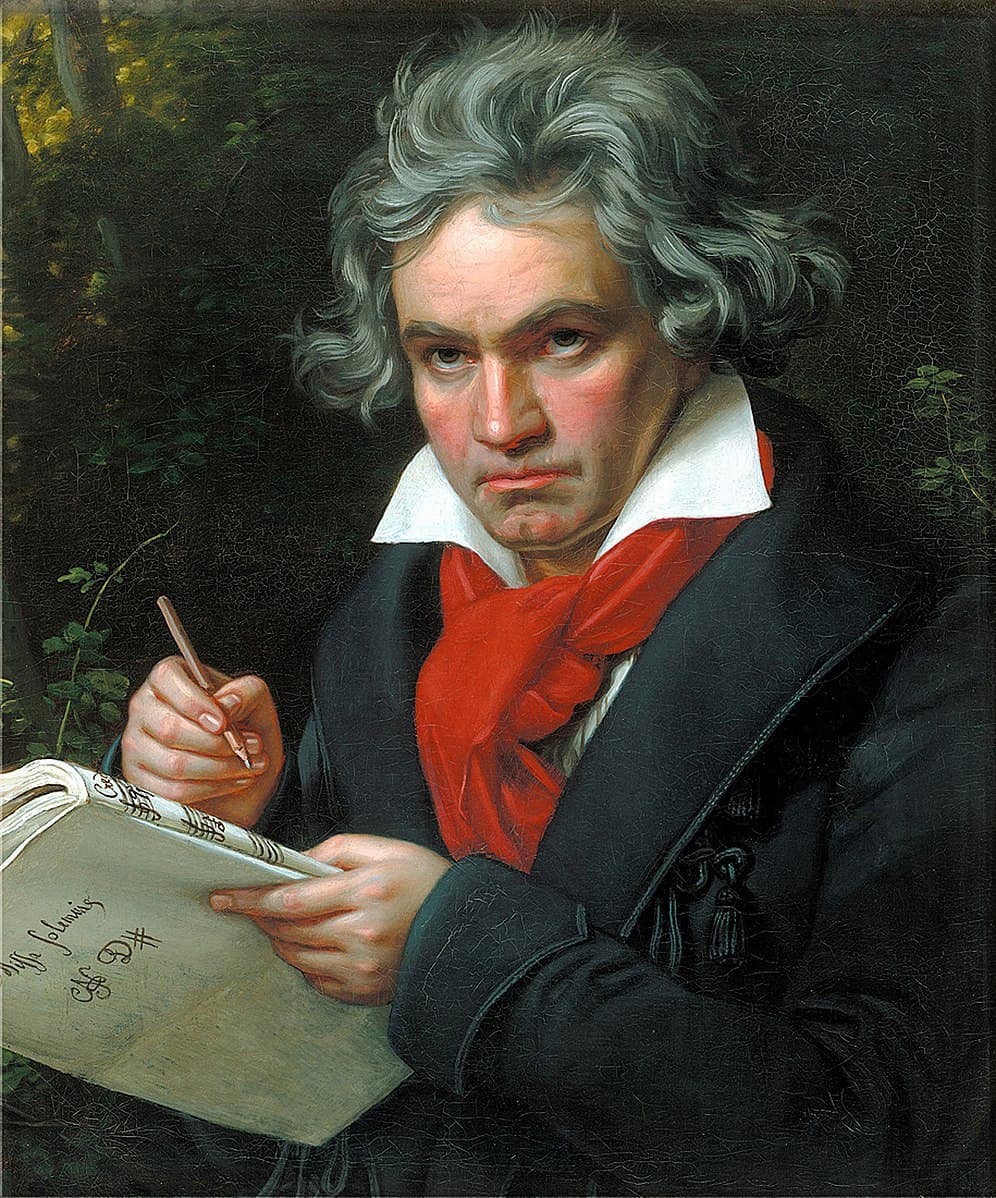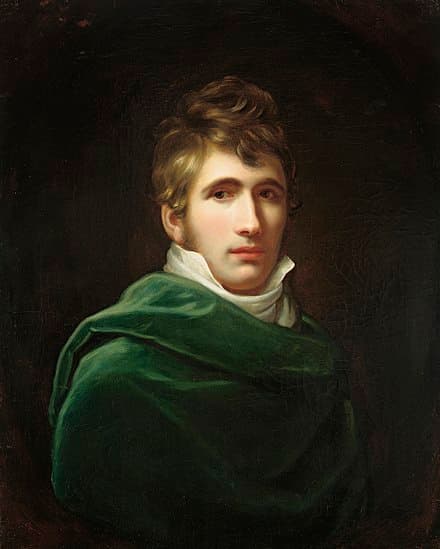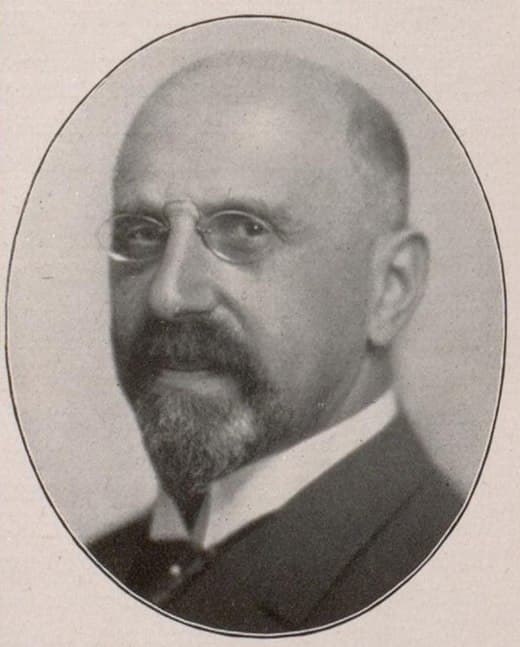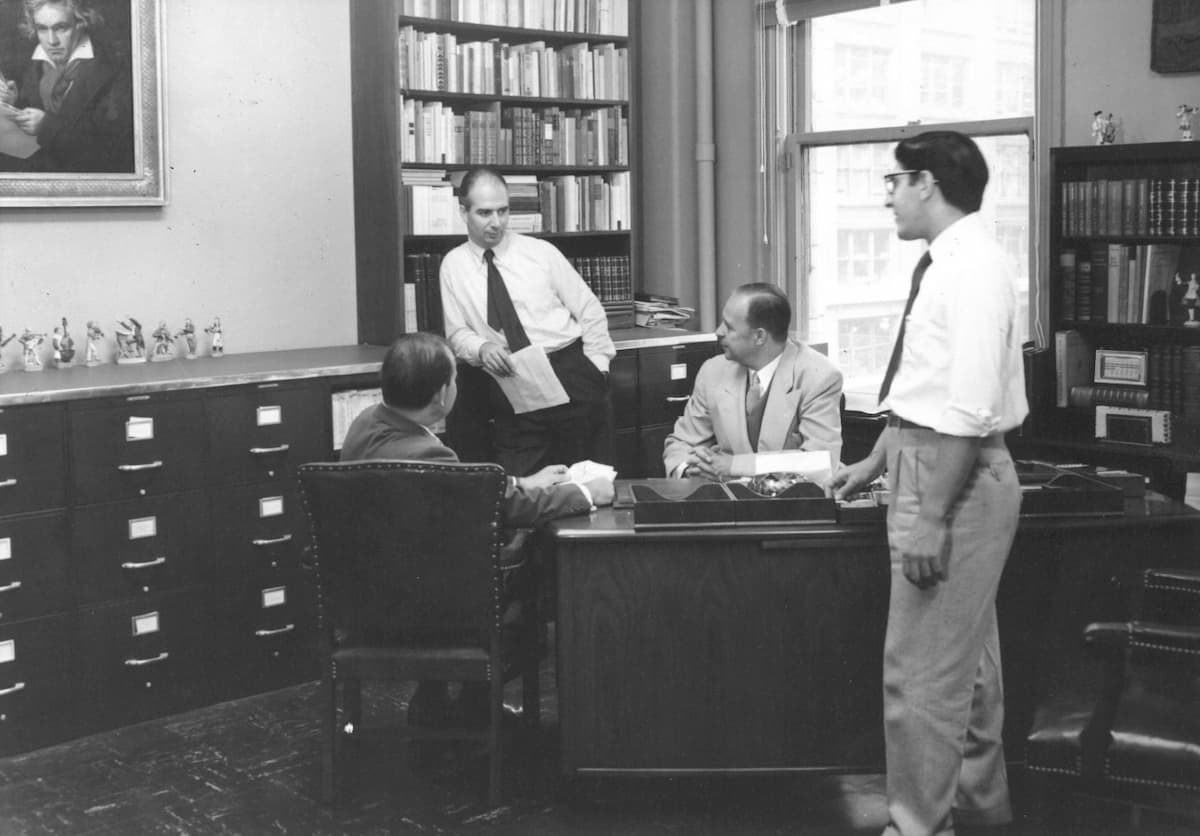Beethoven sat for one portrait in his life.

Portrait of Ludwig van Beethoven
The painting that resulted from that one series of sittings has become an iconic image from cultural history. Here’s why:
- In it, Beethoven gazes past the viewer. He is seeing things that we are kept from seeing, suggesting he’s an innovator looking to the future we can’t imagine.
- Beethoven grips the Missa Solemnis manuscript (a massive work that he would later claim was his favorite).
- He stands in a forest, underlining his Romantic Era connection to the natural world.
- His hair is messy and unkempt. Beethoven’s look emphasizes that he was a perpetual bachelor and had no wife to be a moderating or domesticating influence. He lives for art, and art alone.
With a single stroke, this portrait masterfully sums up the Beethoven mythos in one image.
The Artist Who Painted the Beethoven Portrait

Joseph Karl Stieler’s self-portrait
Joseph Karl Stieler painted the Beethoven portrait. He had a prestigious career and painted for Bavarian royalty. When he painted the Beethoven portrait in 1820, he was almost forty years old, and Beethoven was just about to turn fifty.
The portrait was commissioned by Beethoven’s friends Franz and Antonie Brentano. This was no easy task: Beethoven hated the idea of sitting to have one made. In the end, he either didn’t schedule more than four sitting sessions, or gave up. Stieler had to finish the painting from memory.
It’s believed that, as much as he may have wanted to, Beethoven couldn’t turn down the Brentanos’ commission. The three were close friends – and in the case of Antonie, maybe more. Some believe that his Immortal Beloved letter was meant for Antonie, and that Beethoven was in love with her.
The Best of Beethoven
Winning the Beethoven Portrait at a Raffle
Stieler brought the portrait to Vienna, and reviews of the work were positive. It ended up being a prize at a raffle at the Art Association of Brunswick.
The lucky winner was a man named Wilhelm Spohr. He belonged to a musical family: his brother was a famous violinist and composer named Louis Spohr, and his daughter was a well-known harp virtuoso named Rosalie. After her father died, Rosalie was the one to inherit the portrait.
The Hinrichsen Family Buys the Beethoven Portrait

Henri Hinrichsen
In 1909, she sold it to a man named Henri Hinrichsen, who ran the music publishing company C.F. Peters. The portrait quickly became one of Hinrichsen’s prized possessions.
He hung it in his music room and even commissioned a few copies for various friends. One of those friends was composer Max Reger, who wrote with satisfaction, “I am very, very proud to have this excellent reproduction, which is otherwise not obtainable.”
how BEETHOVEN looked in REAL LIFE
The Tragic Murder of Henri Hinrichsen
In his final years, Hinrichsen watched the rise of the Nazis with apprehension. In November 1938, his home and office were broken into and raided during Kristallnacht. Luckily, he and his wife were traveling in Vienna at the time and weren’t injured, but it did mean that his prized Beethoven portrait was seized by a Nazi official.
Kristallnacht: Night Of Broken Glass
He wrote in anguish to his son Walter, who fled for America in 1936: “There is only one Beethoven-Stieler portrait. That was mine.”
As if that indignity wasn’t enough, the Nazis also froze all of his assets and took over his publishing company without providing him compensation.
In September 1942, Hinrichsen was arrested by the Nazis in Brussels. He was transported to Auschwitz-Birkenau. There, when new arrivals stood on the camp’s railroad platforms, Nazi doctors chose who would die. Eighty percent of arrivals were immediately killed in the gas chamber. Tragically, Hinrichsen was among them.
Finding a Home for the Beethoven Portrait

Walter Hinrichsen with the Beethoven portrait
After the war, Hinrichsen’s son Walter joined the United States Army and was appointed as a Music Officer in the Control Commission in Berlin.
Before Leipzig was taken over by the Soviets and became one of the major cities in eastern Germany, Hinrichsen traveled there and tried to reestablish the family business.
That goal ultimately proved to be impossible due to the political situation. However, he was able to negotiate with the Soviets in a way that his father hadn’t been able to with the Nazis, and he was granted custody of the Beethoven portrait again.
Walter Hinrichsen hung the painting in his office at the New York branch of the family music publishing business. It served as a poignant reminder of his dead father.
Walter went on to a successful career in publishing. He became known for championing new music, including that of John Cage. Today, the American Academy of Arts and Letters gives out an award named for him. He died in 1969.
In 1981, the Beethoven-Haus in Bonn, the house in which Beethoven was born, purchased the painting. You can still see it there today.
For more of the best in classical music, sign up for our E-Newsletter



